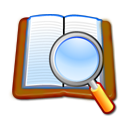Dyslexia
Editor-In-Chief: Prab R Tumpati, MD
Obesity, Sleep & Internal medicine
Founder, WikiMD Wellnesspedia &
W8MD medical weight loss NYC and sleep center NYC
| Dyslexia | |
|---|---|

| |
| Synonyms | Reading disorder, reading disability |
| Pronounce | N/A |
| Specialty | N/A |
| Symptoms | Difficulty in reading, spelling, writing, and sometimes speaking |
| Complications | N/A |
| Onset | Early childhood |
| Duration | Long-term |
| Types | N/A |
| Causes | Genetic and environmental factors |
| Risks | Family history of dyslexia, premature birth, exposure to nicotine, alcohol, or infections during pregnancy |
| Diagnosis | Neuropsychological tests, educational assessment |
| Differential diagnosis | Hearing impairment, vision impairment, ADHD, intellectual disability |
| Prevention | N/A |
| Treatment | Educational intervention, speech therapy, occupational therapy |
| Medication | N/A |
| Prognosis | Varies; many improve with intervention |
| Frequency | 5–10% of the population |
| Deaths | N/A |
Dyslexia is a specific learning disability that is neurobiological in origin. It is characterized by difficulties with accurate and/or fluent word recognition and by poor spelling and decoding abilities. These difficulties typically result from a deficit in the phonological component of language that is often unexpected in relation to other cognitive abilities and the provision of effective classroom instruction.
Characteristics[edit | edit source]
Dyslexia is often associated with difficulties in phonological processing, orthographic coding, and rapid naming. Individuals with dyslexia may have trouble with reading comprehension and may also experience difficulties with writing, spelling, and sometimes speaking.
Causes[edit | edit source]
The exact cause of dyslexia is not fully understood, but it is believed to involve genetic, neurological, and environmental factors. Studies have shown that dyslexia tends to run in families, suggesting a genetic component.
Neurological Basis[edit | edit source]
Research has identified differences in the way the brain of a person with dyslexia develops and functions. The inferior parietal lobule and other areas of the brain involved in language processing may show atypical activation patterns in individuals with dyslexia.
Diagnosis[edit | edit source]
Dyslexia is diagnosed through a series of tests that assess reading, language, and writing skills. These tests are often conducted by educational psychologists or specialists in learning disabilities.
Management[edit | edit source]
While there is no cure for dyslexia, early identification and intervention can significantly improve outcomes. Interventions often include specialized teaching techniques, the use of technology, and accommodations in the classroom.
Writing Systems and Dyslexia[edit | edit source]
The manifestation of dyslexia can vary depending on the writing system. For example, dyslexia in alphabetic languages like English may differ from dyslexia in logographic languages like Chinese.
Clinical Implications[edit | edit source]
Clinicians working with individuals with dyslexia must consider the specific needs of each person, including their language background and the demands of their educational environment.
Technological Aids[edit | edit source]
Assistive technology, such as text-to-speech software and audiobooks, can be valuable tools for individuals with dyslexia, helping them to access written material more easily.
See also[edit | edit source]
Search WikiMD
Ad.Tired of being Overweight? Try W8MD's NYC physician weight loss.
Semaglutide (Ozempic / Wegovy and Tirzepatide (Mounjaro / Zepbound) available. Call 718 946 5500.
Advertise on WikiMD
|
WikiMD's Wellness Encyclopedia |
| Let Food Be Thy Medicine Medicine Thy Food - Hippocrates |
Translate this page: - East Asian
中文,
日本,
한국어,
South Asian
हिन्दी,
தமிழ்,
తెలుగు,
Urdu,
ಕನ್ನಡ,
Southeast Asian
Indonesian,
Vietnamese,
Thai,
မြန်မာဘာသာ,
বাংলা
European
español,
Deutsch,
français,
Greek,
português do Brasil,
polski,
română,
русский,
Nederlands,
norsk,
svenska,
suomi,
Italian
Middle Eastern & African
عربى,
Turkish,
Persian,
Hebrew,
Afrikaans,
isiZulu,
Kiswahili,
Other
Bulgarian,
Hungarian,
Czech,
Swedish,
മലയാളം,
मराठी,
ਪੰਜਾਬੀ,
ગુજરાતી,
Portuguese,
Ukrainian
Medical Disclaimer: WikiMD is not a substitute for professional medical advice. The information on WikiMD is provided as an information resource only, may be incorrect, outdated or misleading, and is not to be used or relied on for any diagnostic or treatment purposes. Please consult your health care provider before making any healthcare decisions or for guidance about a specific medical condition. WikiMD expressly disclaims responsibility, and shall have no liability, for any damages, loss, injury, or liability whatsoever suffered as a result of your reliance on the information contained in this site. By visiting this site you agree to the foregoing terms and conditions, which may from time to time be changed or supplemented by WikiMD. If you do not agree to the foregoing terms and conditions, you should not enter or use this site. See full disclaimer.
Credits:Most images are courtesy of Wikimedia commons, and templates, categories Wikipedia, licensed under CC BY SA or similar.
Contributors: Prab R. Tumpati, MD




